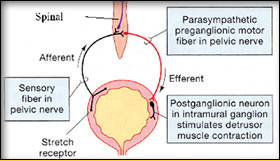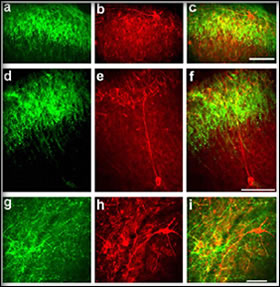 The Scientist: The Scientist:
Cassandra Saunders BBiomed Sc
School of Human Life Science, University of Tasmania
The mysteries of the human body and potential of making a life-saving discovery helped lure Cassandra Saunders to study human life sciences and now draw her towards a career teaching others to delve into the same unchartered waters.
Cassandra completed a Bachelor of Biomedical Science at the University of Tasmania in 2003, where she has recently completed her honours degree (first class honours) in biomedical science and is hoping to begin her PhD in the near future.
Cassandra’s fascination with science began in high school and was fuelled by her own interest, rather than the influence of family or friends.
“Human-based science is so interesting because the human body is so diverse and complex,” she states.
“We still know so little about the normal physiological processes within the human body, let alone the processes involved in disease states and their possible treatments. I believe that there are no limits to what we can learn.
“Knowing that there is so much to be discovered keeps you motivated and inspired. I would be thrilled to make a ground-breaking discovery at some point in the future.”
Cassandra is currently employed as a researcher at the university, and a tutor in molecular biology and metabolic biochemistry.
After completing her PhD, she will consider working overseas or entering the academic ranks. “I’d like to go back into the University institution at some point in the future as a lecturer so that I can inspire others and help to train the next generation of researchers.
Gaining overseas experience is also an option. “There are lots of opportunities to work overseas in Europe and the United States if you so choose to do so. But Australia is also at the forefront of medical research so it is a great place to work if you’re passionate about this area of science.”
More about the Work:
Key words: Capsaicin, nervous system, urology
Cassandra’s honours research project focused on the chilli (capsaicin) receptors in the rat urinary bladder and lumbosacral spinal cord, which play a pivotal role in the process of micturition, or urination. She explains that the bladder wall is inundated with sensory nerves and as the bladder fills these nerves become stimulated, resulting in the output of chemical messages to the spinal cord. This in turn causes the release of a substance called neurokinin 1 (NK1) which is transmitted back to the bladder wall via ingoing nerves and, ultimately, resulting in bladder muscle contraction and urination.
Micturition Process (from power point presentation)
A large proportion of these sensory fibres innervating the urinary bladder have recently been found to be susceptible to the excitatory, sensory blocking and neurotoxic actions of capsaicin, the pungent principle in Mexican red peppers, which may aid in the treatment of a common urological complaint known as detrusor hyperreflexia.


General distribution of the sensory fibres (SP, VR1 and NK1 receptors) in the rat lumbosacral spinal cord and bladder. Looking under the microscope with fluorescence light the sensory fibres fluoresce green and red.
Websites:
Health Benefits of Capsaicin
https://www.whfoods.com/genpage.php?tname=foodspice&dbid=29
Use of capsicum (active ingredient capsaicin) in managing pain
https://www.cancer.org/docroot/ETO/content/ETO_5_3X_Capsicum.asp?sitearea=ETO
School of Health Science, University of Tasmania
https://www.healthsci.utas.edu.au |
